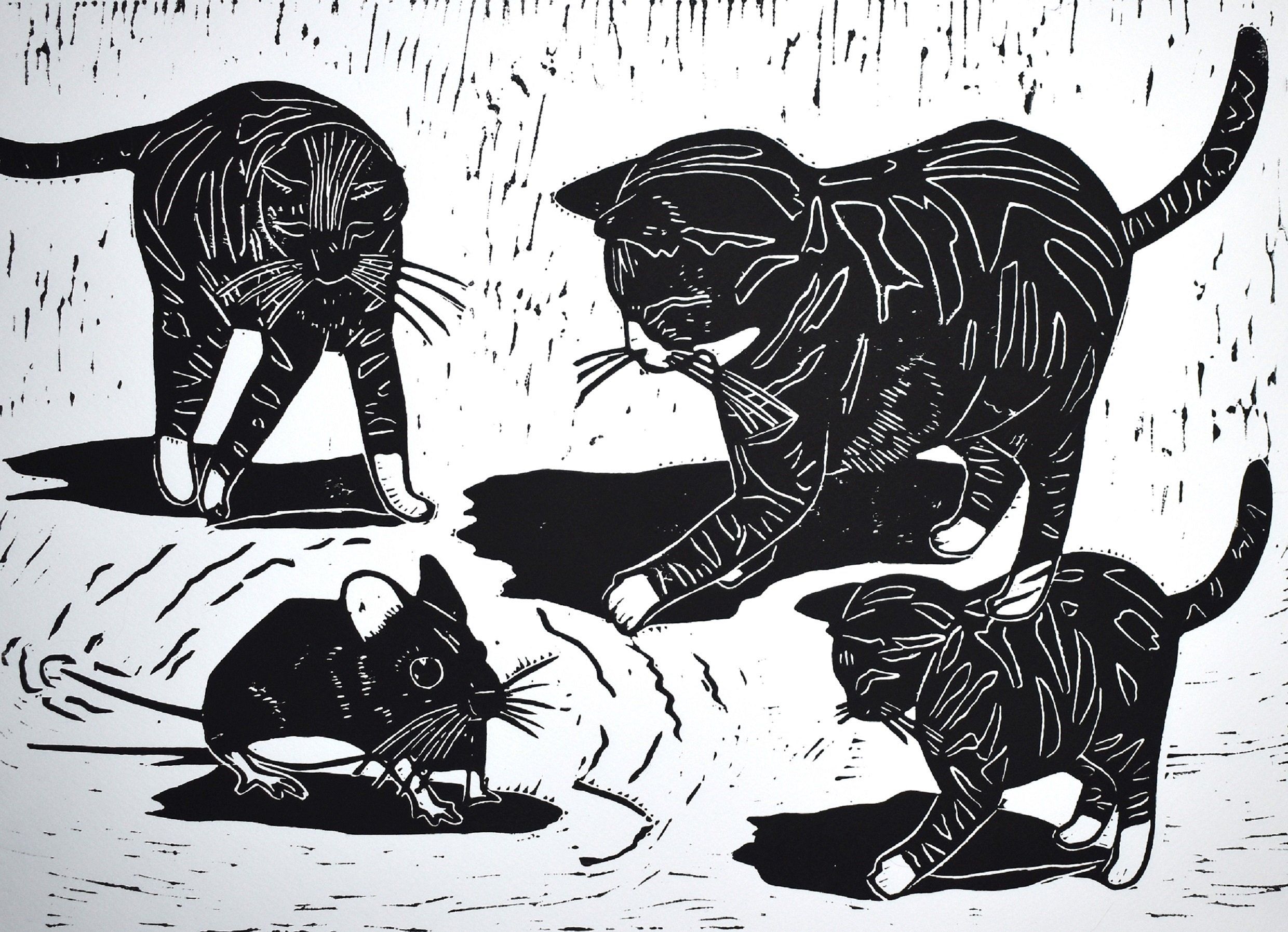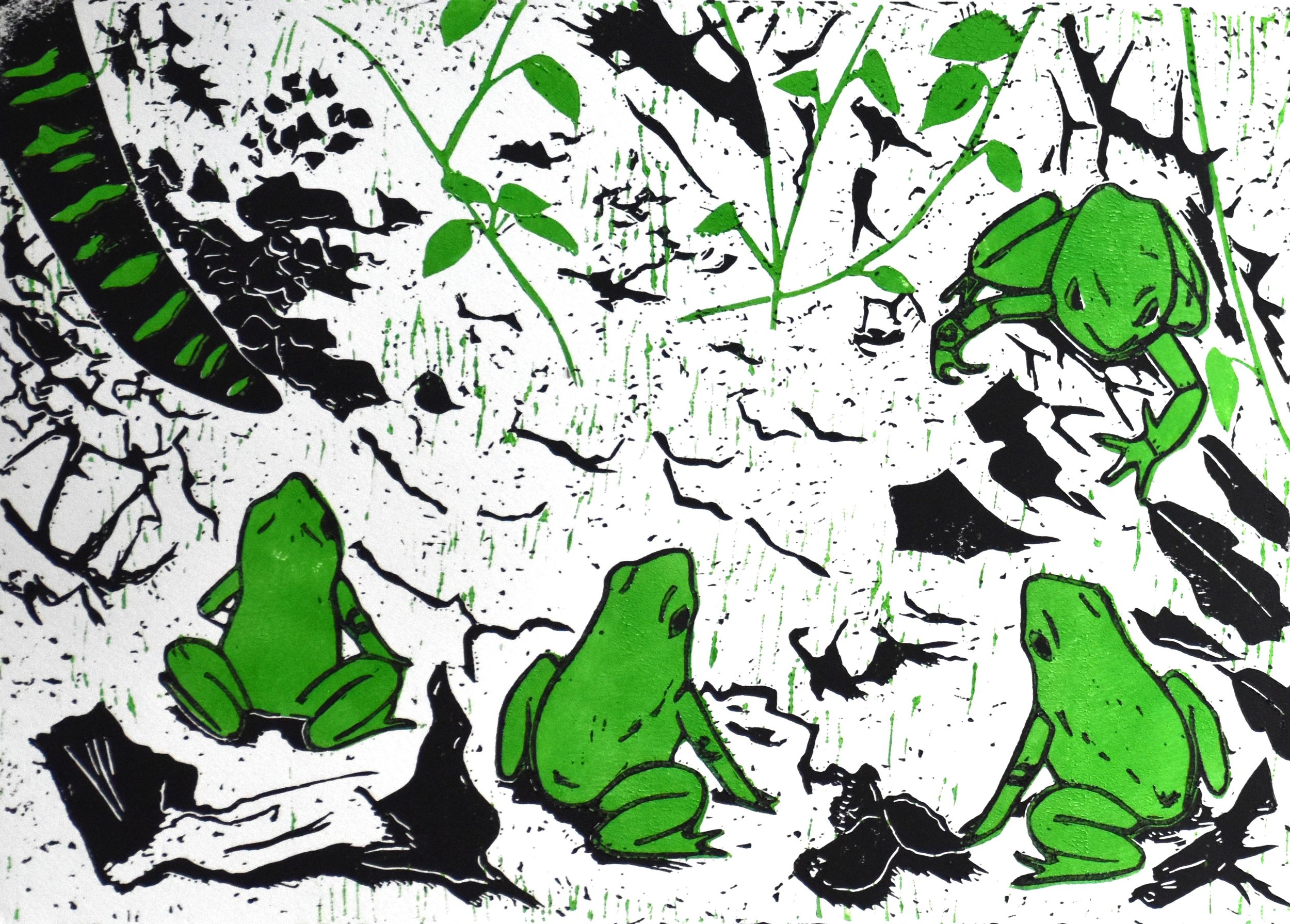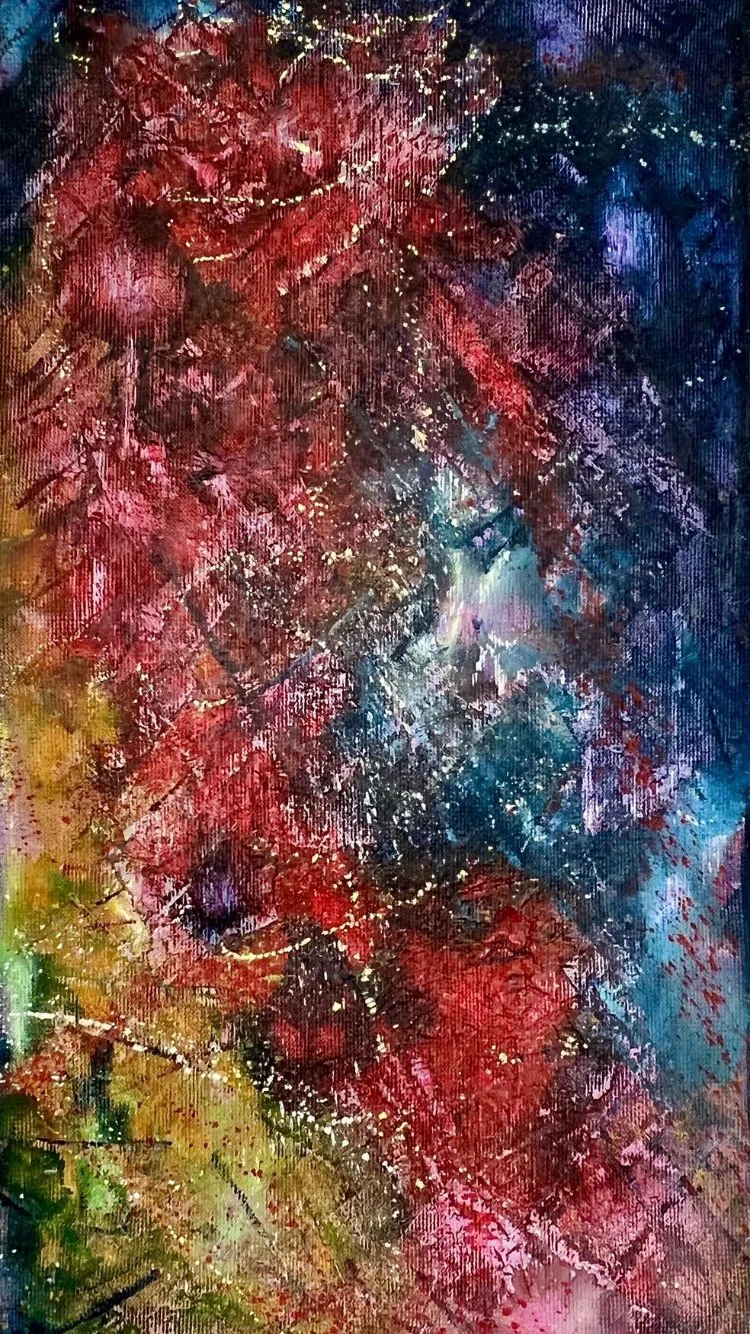Britta Ortiz
Britta Ortiz's oeuvre stands as a profound homage to the natural world, intertwining the intricacies of animal lives with a philosophical depth that transcends mere visual aesthetics. Her linocuts, a dance of contrast and harmony, draw the observer into a contemplative dialogue with the environment that surrounds us, challenging the anthropocentric view that often separates humans from the complex tapestry of life.
Ortiz's deft hand carves not just lines into lino, but also carves into the psyche, questioning the intellect and emotional capacities we reserve as exclusive to humanity. Her animals are not depicted as mere subjects in nature but as sentient beings with a consciousness parallel to ours. Through her careful attention to detail and the vivid portrayal of emotions in her animal subjects, Ortiz shatters the illusion of human exceptionalism. This is particularly resonant in works like "The cat's game with the mouse" and "The cycle of life", where the play and predation of animals are imbued with a sense of strategy and emotional complexity that mirrors our own experiences.
Artists like Ortiz are vital to our world; they reconnect us with the ecosystems we are a part of and remind us of the delicate interdependence that defines our existence. She echoes the ethos of figures like Henry David Thoreau or John Muir, advocates for an immersive experience in nature, while her artistry resonates with the philosophical and environmental narratives akin to those of Joseph Beuys. Beuys, who famously stated, "Every man is an artist," encouraged the understanding of life as a cohesive work of art, a philosophy we see reflected in Ortiz's creations.
Within the contemporary art scene, Britta Ortiz serves as a bridge between humanity and the more-than-human world. She stands alongside the likes of Andy Goldsworthy or Richard Long, artists who articulate the voice of nature in a human-dominated medium. However, unlike the transient works of Goldsworthy or the minimalist expression of Long, Ortiz's prints offer a more intimate and permanent testament to the stories she depicts, echoing the permanence of our impact on nature.
Her artistry does not merely present nature as a backdrop for human narrative but elevates it to a protagonist's role. In "The meeting place," for instance, the natural landscape is not just a setting but a character in itself, shaping the narrative and providing context to the interaction of the figures within it.
The beauty of Ortiz's work lies not only in the aesthetic or the skill but in the narrative and philosophy it suggests. Her artwork is a canvas of questions—about existence, about cohabitation, and about the depth of understanding we owe to our fellow beings. The stark black and white of her prints suggest a clarity, yet within the lines, there is a complexity, a labyrinth of life where every creature, every leaf, and every ripple of water holds meaning.
In an era where the divide between human and nature is both physically and ideologically deepening, Ortiz's works serve as a crucial reminder of the continuum we are a part of. They beckon us to pause, to observe, and to reflect. In "The forest trip," the trees and creatures invite us to contemplate our place in the greater scheme, urging us toward a respectful and reciprocal interaction with the world.
Ortiz's linocuts are a conservationist's plea, a philosopher's query, and an artist's narrative. Her presence in the art world is a testament to the necessity of voices that champion not only the aesthetic but also the ethical and existential narratives that are often sidelined. Her work serves as an anchor, grounding us in the fundamental truth that we are, after all, simply another thread in the web of life.
As she continues to carve her niche, Ortiz's legacy becomes increasingly relevant, not only within the art community but also within the broader discourse of environmental conservation and animal welfare. Her artworks, rich with the beauty of the living world and the profound connections that bind us, will undoubtedly continue to inspire and challenge us for years to come.
In the strokes of Britta Ortiz’s linocuts lies an intricate dialogue between humanity and the more-than-human world, a narrative that weaves through the warp and weft of nature’s own story. Her works do not simply capture the physical form of the fauna she depicts but delve into the essence of their being, reflecting a profound understanding that the line between human and animal intelligence is far more blurred than traditionally conceived.
This philosophy in her art brings to mind the echoes of Darwin, who posited the continuity of mental faculties between animals and humans, a sentiment Ortiz seems to express through the sentience she imbues her subjects with. In her portrayal, one can see the implicit belief that animals, much like humans, navigate their lives through a spectrum of emotions and cognitive complexities.
“The highest price” is a haunting visual symphony that speaks of vulnerability and the unseen battles fought every day. It showcases Ortiz's unparalleled ability to translate the fragility of existence, the strength found in moments of adversity, and the resilience that is often unnoticed in the daily lives of creatures.
Ortiz's art demands a reevaluation of our perception of animals—not as resources or symbols but as fellow beings sharing in the journey of life. In “Today's toys,” she starkly comments on the human intrusion into the natural world, inviting reflection on the impact of our actions. It is a subtle yet powerful critique of the age of the Anthropocene we inhabit.
Beyond the philosophical, there is an undeniable aesthetic mastery in Ortiz’s work that secures her place within the art scene. Her style, reminiscent of the expressionist vigor of Kathe Kollwitz and the intricate naturalism of Maria Sibylla Merian, carries the legacy of artists who have blended the scientific with the spiritual, the concrete with the conceptual.
Artists like Ortiz are not just important but essential in a world where disconnection from nature is often the norm. Her art rekindles the primal bond between human and nature, speaking to the interconnectedness that modern life frequently obscures. Each linocut, with its rich textures and life-like dynamism, becomes a manifesto calling for a renewed kinship with the world we too often take for granted.
As Ortiz continues to carve her legacy into the annals of art history, she stands as both a guardian of nature’s splendor and a chronicler of its truths. Her art is a beacon that shines brightly, guiding us back to a path of coexistence and reverence for all life forms. It is a visual poetry that challenges, delights, and inspires—a testament to the shared bond of life that unites us all.
Britta Ortiz's body of work represents a vital narrative in contemporary art that blurs the lines between humanity and the animal kingdom, illustrating a shared existence rich with emotion and intelligence. Her linocuts, a stark contrast of black and white, are not just visually striking but are imbued with a deep philosophical resonance that reflects on our relationship with the natural world.
Ortiz’s art acts as a mirror, compelling us to confront the reality of our interactions with nature and the creatures within it. Through her masterful technique and insightful perspectives, she captures the nuanced behaviors of animals, portraying them as sentient beings with complex emotions and social structures that parallel our own. Her work extends beyond the visual medium, becoming a commentary on the environmental challenges we face, the ethical responsibilities we bear, and the moral considerations we must address in the Anthropocene era.
The importance of artists like Ortiz cannot be overstated. In a world where the environment is increasingly under threat, her artwork serves as a poignant reminder of the intrinsic value of all life forms. It’s a clarion call for empathy, conservation, and cohabitation. Her contributions to the art scene are a bridge between the echoes of past naturalist artists and the contemporary narrative of ecological consciousness.
As she etches her place in the art world, Britta Ortiz stands out as a beacon of environmental advocacy and philosophical inquiry. Her works are not merely to be observed; they are to be experienced and reflected upon. They demand engagement, eliciting a response that is both emotional and cerebral. Ortiz’s art is a testament to the beauty and complexity of life, encouraging a harmonious relationship with the natural world. Her linocuts are a celebration of life's interconnectedness, a lyrical and enduring reminder that we are, in essence, all inhabitants of the same Earth, bound by the same cycle of life, and responsible for each other's well-being. Britta Ortiz’s legacy is more than her art—it is a vision of the world as it could be: diverse, empathetic, and profoundly interconnected.
By Marta Puig
Editor Contemporary Art Curator Magazine
Danish raw material
Møns Klint II
Sagnlandet Lejre
The cat's game with the mouse
The cycle of life
The forest trip
The highest price
The horse girls
The meeting place
Today's toys













